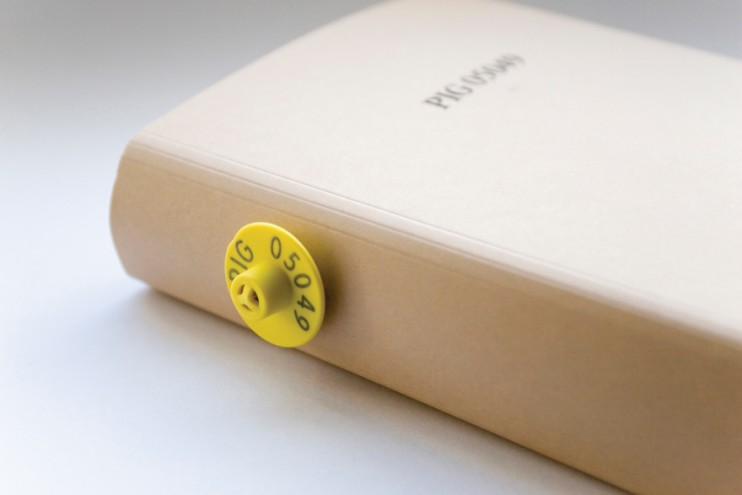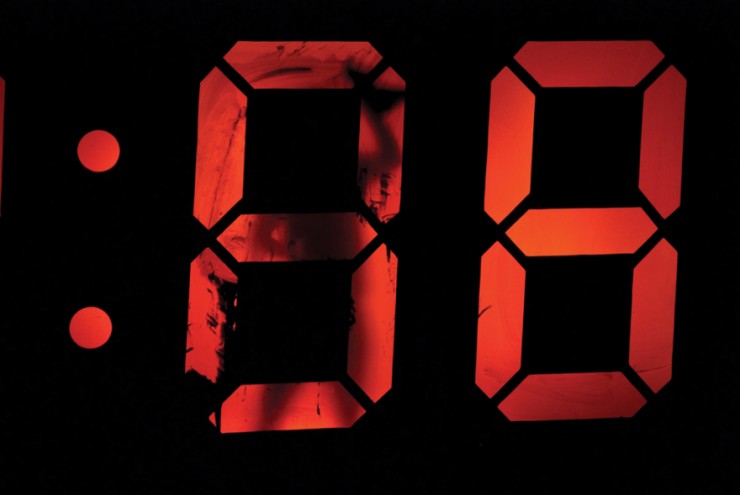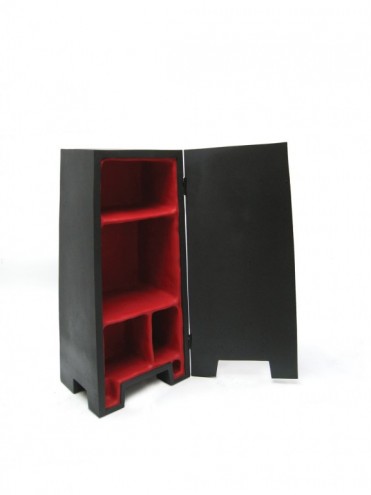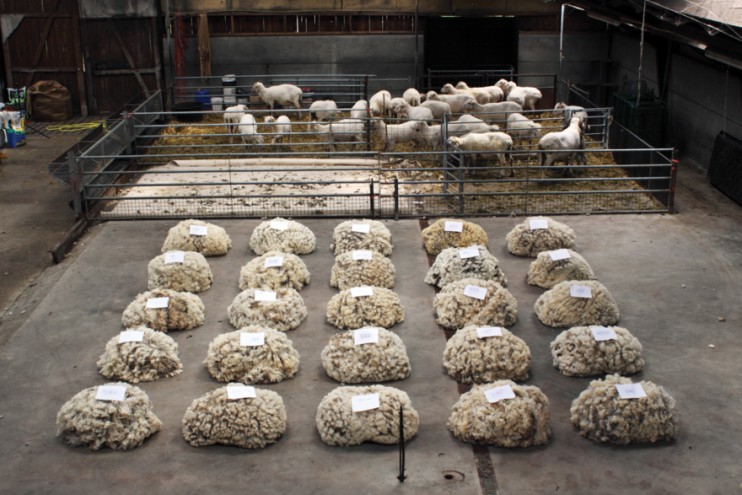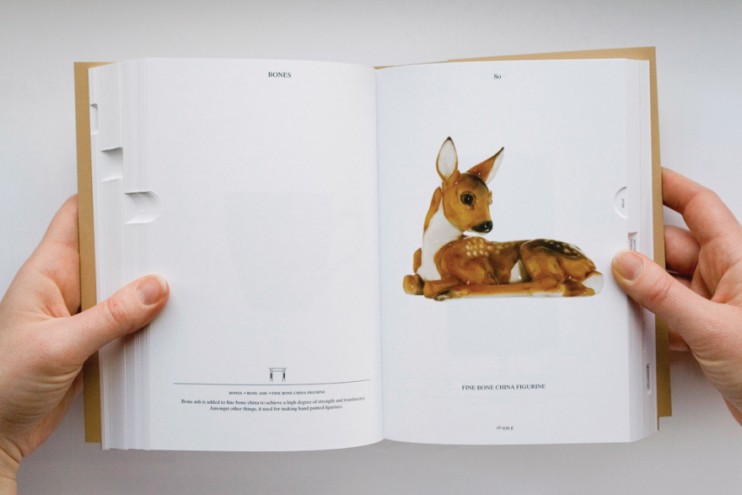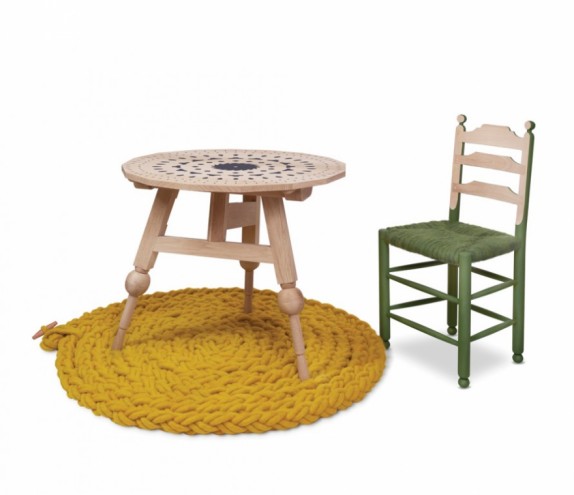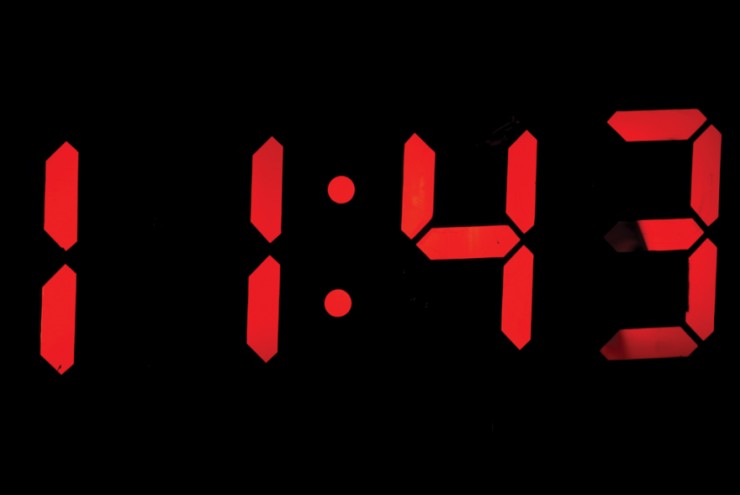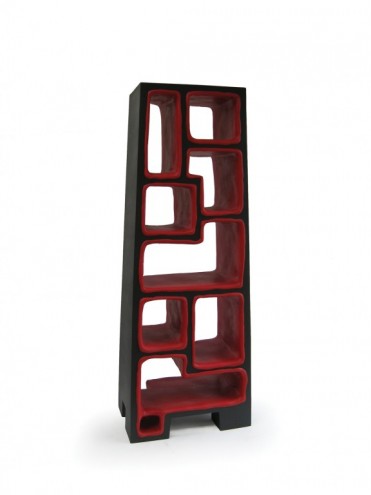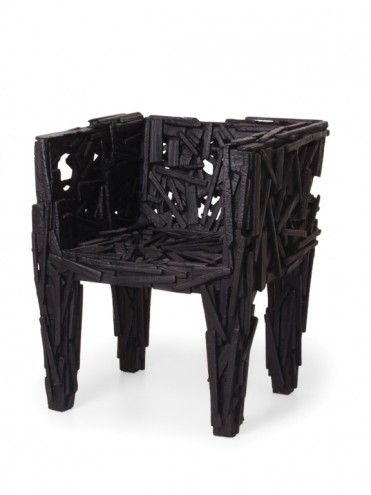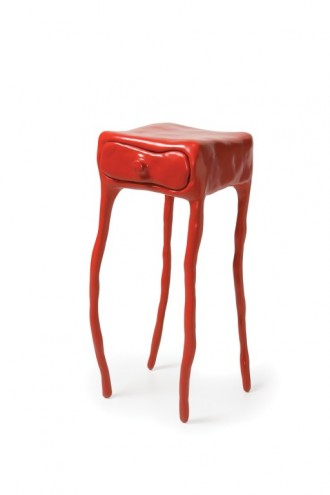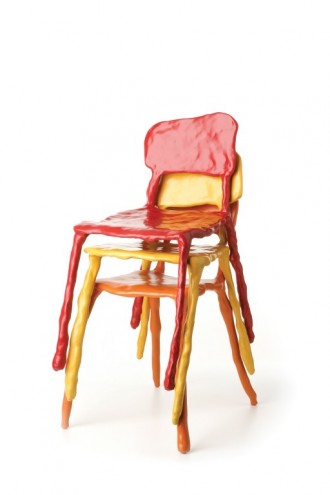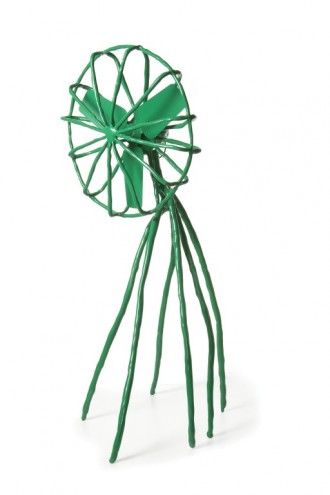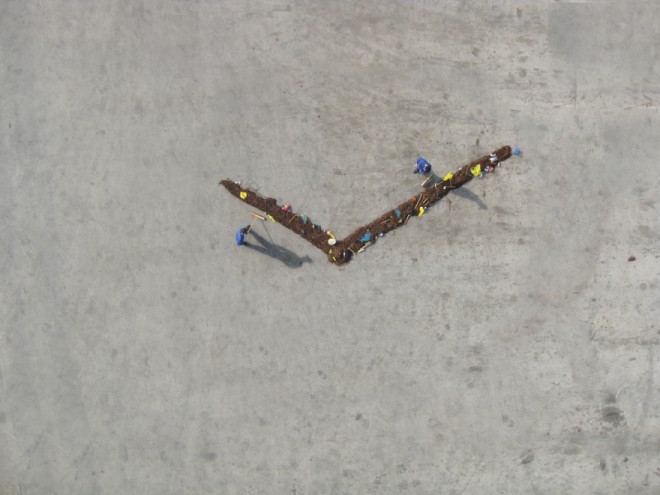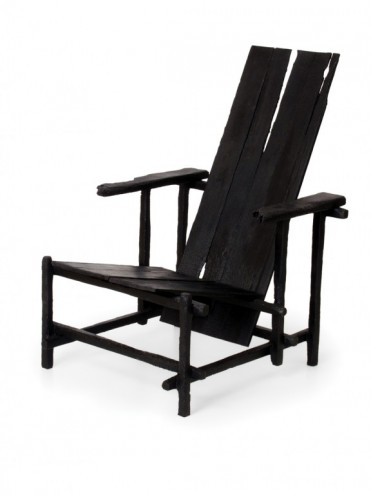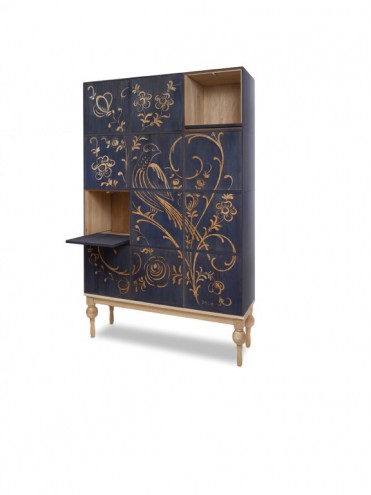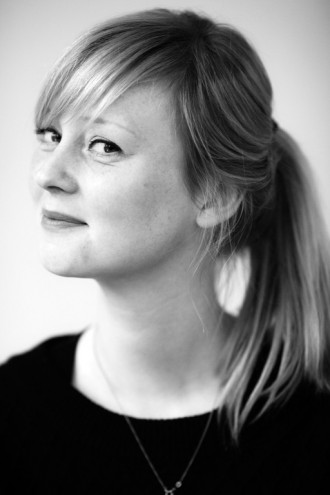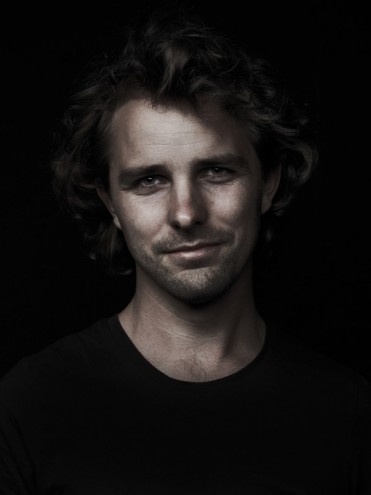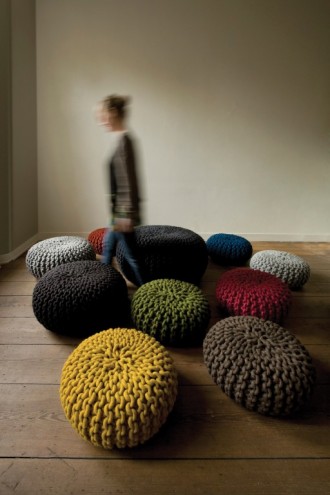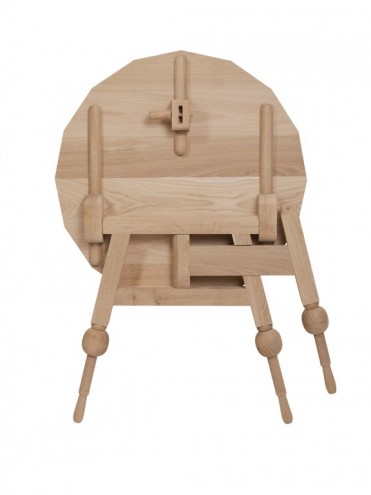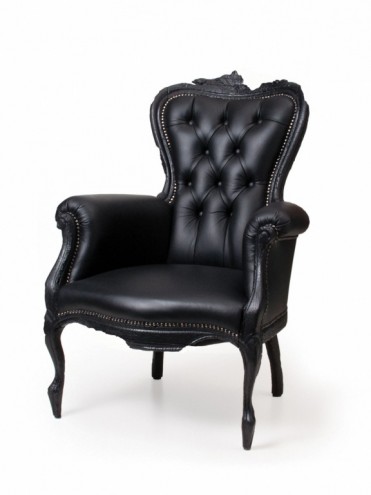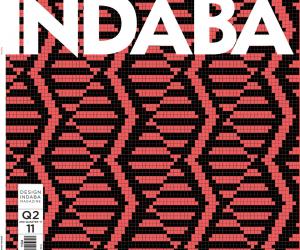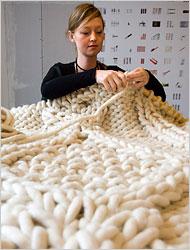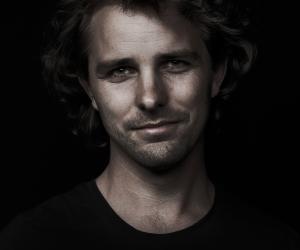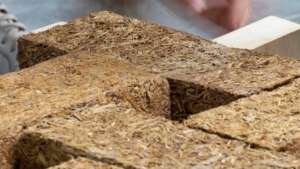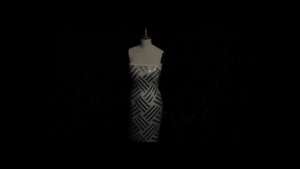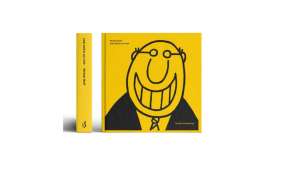First Published in
Christien Meindertsma: We’ve known each other a long time, even if we don’t speak to each other that often, but lots of things have happened since we were in school. Did you expect all of this to happen?
Maarten Baas: No, I didn’t expect it. It went pretty fast, the whole thing and that was very nice. I remember that my sister’s boyfriend at the time had a small pottery shop in Utrecht on the canal and he made his own things. That was the picture I could imagine for myself with maybe just a slightly bigger shop than his. Two or three people maybe. I thought that if Smoke, my graduation project, became a success, I could make furniture like that in an “ateljee” (studio) like that.
Christien: Did you ever think about yourself as being this, like all of this would happen? You’re the same person, of course, but there’s the person who you were in school and then there was this explosion…
Maarten: In school I did have the feeling that if I wasn’t bored by teachers, school and the things that are expected of you, I could get on with it. I had an inner feeling that I could make a difference somewhere. I didn’t think that it would go this fast and, of course, everyone has several angels and devils in their heads – I was very insecure, especially in school. I didn’t really enjoy the Design Academy; I had a hard time. I always thought that the teachers were saying something totally different to what I thought was right. But then I thought that the teachers must be right, because they know about it and could explain it all so well; I couldn’t put a finger on where their theory wasn’t working. How did you see the Design Academy? I had a feeling that you were quite confident. It went quite well, didn’t it?
Christien: Ja, it went quite well but I felt more like it went medium well, like well enough. I had a really hard time graduating and that made me really think about what I wanted to do a little more than what I had to. Now when I look back, eight years after graduating, I realise that both the projects were really a little seed for whatever was going to grow from that. In the end I don’t think it’s important what your teachers think. It’s not nice if they don’t think you’re good, but it’s really important that you find your own voice.
Maarten: How did you experience the first year after the Design Academy when you really had to build up your own studio?
Christien: The first three years were rough, not super rough. There are people who had a worse time, but people around me were having such huge successes that anything I did just seemed ridiculous. I was doing projects that take a long time and a lot of research, so the result wasn’t immediately visible. The first year it was pretty hard to see that what I was doing was worth doing. Now I know that I work very slowly and knowing that helps.
Maarten: I’ve always appreciated you taking your time and not wanting to blow away. Because of your personality and the content of your work, it shows a certain patience. I once expressed my appreciation for this patience when I was talking to you, it always results in good quality and very genuine stuff. The words “genuine” and “integrity” is really what fits you and your work. On one hand, of course, I totally understand that you are flabbergasted by the surroundings that have specific expectations of you. But, on the other hand, I am also surprised to hear it because Christien is part of the same generation that just goes and goes, even when everything else goes faster and faster.
Christien: Did you find it complicated to keep up with the whole wave? Having a good start is one thing and then being able to keep up with that is another quality.
Maarten: In the first years it was very difficult. Later on I met Bas den Herder who took over more of the production and I started getting more paid assignments. But I had a very hard time just after graduating when very important assignments came my way and I thought I couldn’t say no – like Philippe Starck wanted chairs and Moss wanted a solo exhibition. But all I had to show was Smoke, and already three weeks after my graduation, people were asking what’s next. So there was pressure, which was also very much pushed by the Design Academy with this idea that designers have to change every year and come up with a new collection. Besides outer pressure, there was also an inner pressure saying: “Fuck, I have new ideas and I want to try them.” But I simply didn’t have the time because I needed to find a studio, buy tools and find people who could work with me, and I didn’t have money yet. Meantime, besides the outer and inner pressure, I also thought: “Fuck, I’m not even doing what I really want to do.” So that was the first few years.
Christien: People don’t always see how complicated the story behind the success is, to keep up with it all. It’s a whole talent in itself to not lose your head.
Maarten: How do you think your work relates to the rest of design?
Christien: It’s a difficult question because I don’t work in that way of making something because it’s missing in the design world, because I don’t really see a border around the design world and me working in it. I feel like I work with one leg in the design world and the other one… I don’t know, it depends on wherever that is. When I graduated, I was really interested in telling stories about materials and what things are made of. After a few years that seemed to fit pretty well in the spirit of the time and I think that is still the case. It’s still really complicated for a designer though: Do you make new things out of rare materials? Should you make them or not? Does the designer have a responsibility to think about that? Are there clients that you would work for or wouldn’t work for? Those are important questions for me, and lots of people are asking them and working with that. I see myself in that question area of how one makes things of this time. I don’t really have answers, but it’s an interesting area to work in – questioning how you make things, how you work with materials and whether they are good materials.
Maarten: Do you ask the questions to yourself or is it more that you want to raise the questions with the rest of the world?
Christien: I ask them more to myself. But, for instance, the book about the pig was more of a question to everyone. It didn’t say we should do it this way or that way, but it is an important thing to talk about how complicated our product world is and that we don’t really have a clue what we are doing. It’s important that not all our things are made on the other side of the world and that we know how things are made. You make your own furniture in your studio, right? Or do you also have production locations?
Maarten: There are some things in production as well. I’m also always trying to balance what I do, but more and more I’m coming to the conclusion that the most logical for me is to do it here, to make small editions. I hate the whole limited-edition thing, but I can only make 10 of them so I might as well just put a number on it. It’s not that I artificially make a limited-edition even though I could’ve made a 100. I only have so many people here and I’m trying to keep it the size of a family so that there’s a human scale to what we do. I think it’s more responsible in that way. Still, I’m always struggling with integrity and that is where you inspire me. The way you work is so pure and you make your choices with so much integrity. It’s all so one-on-one and I really like that, even though our ways of working are in some ways completely opposite. I don’t really care about material for instance and you base your things on material, and I also think my products should work without any background story, while your things often have a background story on which it’s based.
Christien: I also think that there’s a similarity in the way that we both don’t like to make things that are complicated to understand. I mean, I do have stories but I always want to make something that both my neighbour and somebody who is totally into design can understand in their own way. Your work is very easy to understand for any kind of person, you don’t need to be a complete design or art lover to get it.
Maarten: There is a challenge in reaching the whole group, from a four-year-old to a museum director, as well as the most intellectual whoever. The wider I can get that spectrum the better. With Real Time and Clay Furniture, but especially Real Time, I really had that whole scope.
Christien: Yeah, I saw Real Time in the Rijksmuseum and thought it was really cool. It’s something that anybody can understand and the Rijksmuseum is the perfect place, right? Everybody still goes there, it’s still a really high beautiful place. With the Clay Furniture, it’s the same because if you’re a five-year-old you can understand it, but it’s also the furniture on the famous Dutch television show, which is pretty intellectual television.
Maarten: Clay Furniture was my most important collection. Like you said that your graduation projects were the seeds for what you’re still doing, Clay Furniture captures what I want to represent. I was also very insecure about people wanting it. I mean, people could say that their four-year-olds could make it. Since Clay Furniture became so successful, I told myself
that I will always listen to the voice who says “come on, do it” instead of the voice who says “I don’t know if this is a smart idea”.
Christien: If somebody calls you an artist, do you say that actually you’re a designer or do you totally not care about it?
Maarten: Actually, much of what I do is confusing all those boundaries about what is and is not beauty, art and design, or high end and low end. I actually want to erase all those fixed borders. Also between art and design, I don’t want to be in one because I don’t believe in it. Categories are nice, but it’s a very rational thing and the essence of what we do is not so rational. At the Design Indaba, I explained that I’ve been eating tomatoes my whole life, but I don’t know if it’s a vegetable or a fruit. I mean, who cares?
Christien: Do you have a future wish where you want your work and company to go?
Maarten: No. Basically, in recent years, my future wishes were fulfilled earlier than I could actually dream of them. I’m spiritual sometimes and believe that the universe wants you to do certain things, but this went so fast that I’m almost getting cynical! Now things are starting to settle down and I don’t want to just jump into the next big thing. I never had a future plan, which also makes it difficult because, what now? I don’t want to go big and normally that’s the logical thing – to grow or do more challenging projects – but that’s certainly not my ambition. At Design Indaba, I described it as there being a summer and a winter, and for me it’s now time to be in winter, to let things grow under the ground and see what happens. And you, do you want a farm?
Christien: Yes, I do want a farm! But work-wise too, everything went many times better than I expected it to. Right now I have the freedom to do whatever I think is good or what I want. Just to have this freedom… I hope it’s going to stay exactly this way. There’s enough opportunity and I’m also doing just enough for one person to handle, so I don’t need to get bigger or grow as a company. If things could stay this way – as challenging and exciting – I’d be really grateful. I also trust what’s going to happen, I mean I don’t really have a bigger plan. I don’t think you should hold onto a plan too much, as really nice things can just happen.
Maarten: That’s also what I like about what your designs represent in the design world… It’s a different movement, rather than the big factory, which produces 10 000 anonymous things that you don’t know where they come from. That is the product translation of what also happens in general – people make plans and want to be more, and it’s a very rational society in which people expect things to follow logically. That’s also why I don’t like those divisions between art and design, because it’s all in the family of rational thinking – you need to make a plan, you need to categorise things and you need to be bigger. It’s the opposite of how nature works – there is no plan, nature just grows and sees what happens.
Christien: We’re both like that – we don’t want to grow bigger or go for more. It’s strange that that’s how the product world generally works – you always have to make more profit, the economy always has to grow. I think that’s a really weird thing. Normally we should be thinking about how our company is going to be bigger and better next year. But it’s a really great thing that we can just decide that it’s good this way and we don’t want to grow any bigger.
Maarten: Yeah, let’s have a beer on that!

